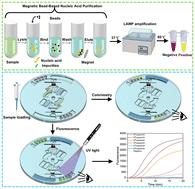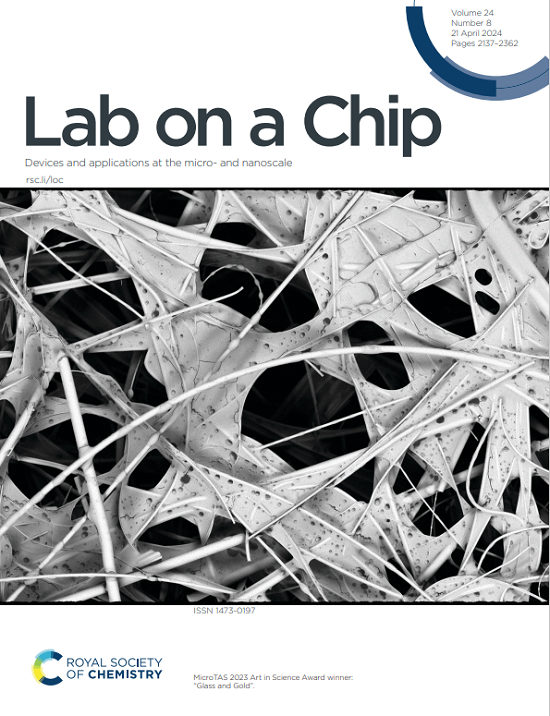一种用于肺炎支原体检测的多阀离心微流体
IF 5.4
2区 工程技术
Q1 BIOCHEMICAL RESEARCH METHODS
引用次数: 0
摘要
肺炎支原体是一种广泛流行的传染病,采用等温扩增技术快速准确地检测肺炎支原体对维护个人和公共卫生安全至关重要。近年来,微流控技术在减少试剂消耗和缩短检测时间方面显示出优于传统临床方法的优势。然而,在缩短检测时间的需要与确保扩增反应的充分性之间取得平衡仍然是一个挑战。最大限度地减少检测时间,同时保证反应的准确性是一个关键挑战。因此,本工作设计了一种集样品裂解、核酸提取和扩增过程于一体的离心微流控芯片。通过匹配欧拉力阀、气动离心阀和欧拉力驱动虹吸阀的释放特性,实现反应溶液的顺序释放。延迟释放结构的设计提高了提取核酸的浓度,同时精确控制转速,更合理地分配检测时间。最终在10分钟内完成肺炎支原体的定性检测。同时,该芯片提取的核酸浓度达到74 ng μl−1,最低检出限为103拷贝/ ml。本文提出的离心微流控芯片设计优化方法有助于该技术在临床医学中的推广。本文章由计算机程序翻译,如有差异,请以英文原文为准。

A multi-valve centrifugal microfluidic for Mycoplasma pneumoniae detection
Mycoplasma pneumoniae is a widely prevalent infectious agent, and its rapid and accurate detection using isothermal amplification technology is crucial for maintaining both personal and public health safety. In recent years, microfluidic technology has demonstrated advantages over traditional clinical methods by reducing reagent consumption and shortening detection time. However, a challenge remains in balancing the need to shorten detection time with ensuring the adequacy of the amplification reaction. Minimizing detection time while guaranteeing the accuracy of the reaction is a key challenge. Therefore, this work designs a centrifugal microfluidic chip that integrates sample lysis, nucleic acid extraction, and amplification processes. The sequential release of the reaction solution is achieved by matching the release characteristics of Euler force valves, pneumatic centrifugal valves, and Euler force-driven siphon valves. The design of the delayed-release structure enhances the concentration of extracted nucleic acids, while precise control of the rotational speed allows for more rational allocation of detection time. Ultimately, qualitative detection of Mycoplasma pneumoniae is completed within 10 minutes. Concurrently, the nucleic acid concentration extracted by the chip reached 74 ng μl−1, with a minimum detection limit of 103 copies per ml. The optimization method for centrifugal microfluidic chip design proposed in this manuscript contributes to the promotion of this technology in clinical medicine.
求助全文
通过发布文献求助,成功后即可免费获取论文全文。
去求助
来源期刊

Lab on a Chip
工程技术-化学综合
CiteScore
11.10
自引率
8.20%
发文量
434
审稿时长
2.6 months
期刊介绍:
Lab on a Chip is the premiere journal that publishes cutting-edge research in the field of miniaturization. By their very nature, microfluidic/nanofluidic/miniaturized systems are at the intersection of disciplines, spanning fundamental research to high-end application, which is reflected by the broad readership of the journal. Lab on a Chip publishes two types of papers on original research: full-length research papers and communications. Papers should demonstrate innovations, which can come from technical advancements or applications addressing pressing needs in globally important areas. The journal also publishes Comments, Reviews, and Perspectives.
 求助内容:
求助内容: 应助结果提醒方式:
应助结果提醒方式:


